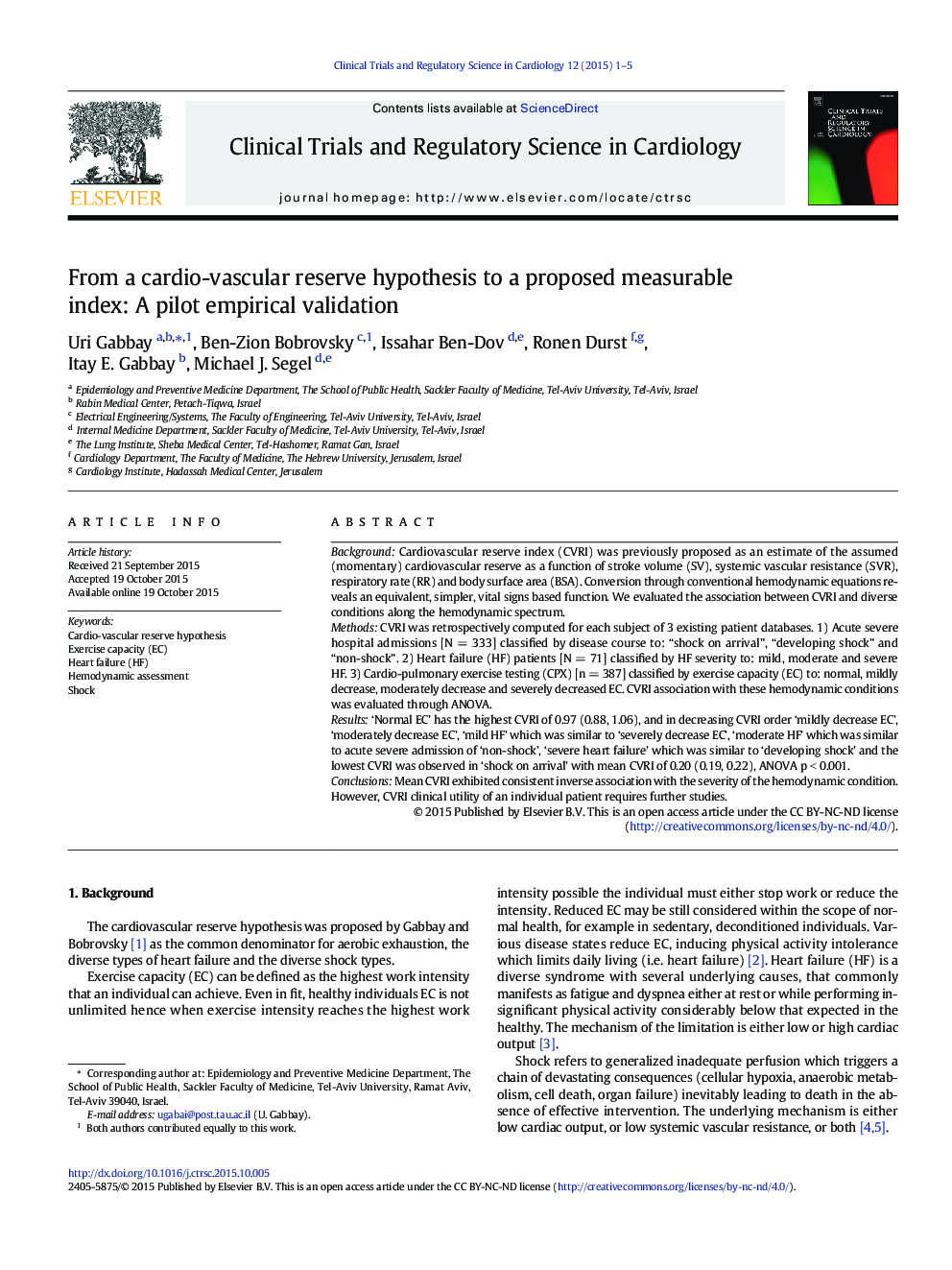| Article ID | Journal | Published Year | Pages | File Type |
|---|---|---|---|---|
| 2498647 | Clinical Trials and Regulatory Science in Cardiology | 2015 | 5 Pages |
BackgroundCardiovascular reserve index (CVRI) was previously proposed as an estimate of the assumed (momentary) cardiovascular reserve as a function of stroke volume (SV), systemic vascular resistance (SVR), respiratory rate (RR) and body surface area (BSA). Conversion through conventional hemodynamic equations reveals an equivalent, simpler, vital signs based function. We evaluated the association between CVRI and diverse conditions along the hemodynamic spectrum.MethodsCVRI was retrospectively computed for each subject of 3 existing patient databases. 1) Acute severe hospital admissions [N = 333] classified by disease course to: “shock on arrival”, “developing shock” and “non-shock”. 2) Heart failure (HF) patients [N = 71] classified by HF severity to: mild, moderate and severe HF. 3) Cardio-pulmonary exercise testing (CPX) [n = 387] classified by exercise capacity (EC) to: normal, mildly decrease, moderately decrease and severely decreased EC. CVRI association with these hemodynamic conditions was evaluated through ANOVA.Results‘Normal EC’ has the highest CVRI of 0.97 (0.88, 1.06), and in decreasing CVRI order ‘mildly decrease EC’, ‘moderately decrease EC’, ‘mild HF’ which was similar to ‘severely decrease EC’, ‘moderate HF’ which was similar to acute severe admission of ‘non-shock’, ‘severe heart failure’ which was similar to ‘developing shock’ and the lowest CVRI was observed in ‘shock on arrival’ with mean CVRI of 0.20 (0.19, 0.22), ANOVA p < 0.001.ConclusionsMean CVRI exhibited consistent inverse association with the severity of the hemodynamic condition. However, CVRI clinical utility of an individual patient requires further studies.
